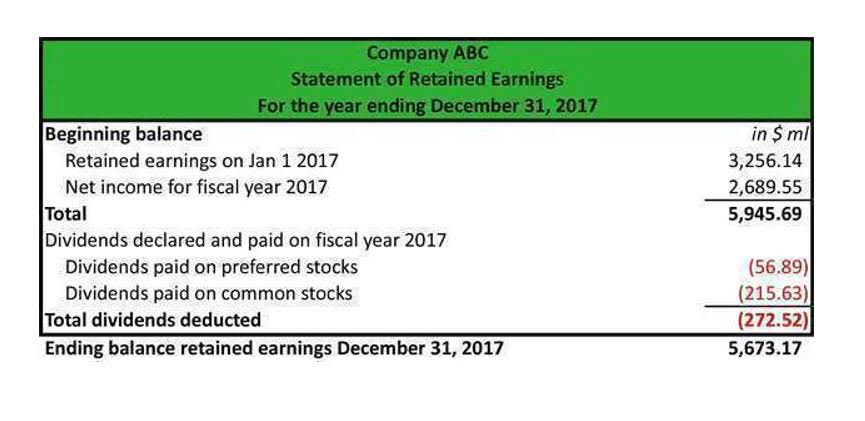Content

You can use the income statement to summarize monthly, quarterly, or annual operations. A quarterly income statement shows the profits or losses generated by your business over a three month period. It can also be referred to as a profit or loss account, and is a crucial financial statement that shows the businesses income and expenditures, detailing your net income or net profits. Subtract the selling and administrative expenses total from the gross margin. For example, valuation of inventories using LIFO instead of weighted average method.
Is loss an asset or liability?
Losses are Asset. According to Separate entity concept Owner & the business are not one& the same. The company is entirely different from its owners. Profit is a liability because business runs with owners/ share holders capital.
On the right side, they list their liabilities and shareholders’ equity. Sometimes balance sheets show assets at the top, followed by liabilities, with shareholders’ equity at the bottom. The aggregate total costs related to selling a firm’s product and services, as well as all other general and Income Statement administrative expenses. Direct selling expenses are expenses that can be directly linked to the sale of specific products. Indirect selling expenses are expenses that cannot be directly linked to the sale of specific products, for example telephone expenses, Internet, and postal charges.
Usually, simply straight-lining the last historical year’s tax rate is sufficient. However, there are times where tax rates historically are not indicative of what a company can reasonably expect to face in the future. On the other hand, a buy side or private equity analyst will spend far more time understanding the businesses they are considering as an investment. If they get the assumptions wrong, after all, their returns will suffer.
Income Statements
External debt and related expenses is typically handled by the Office of the Treasurer. Depreciation Expense – the allocation of the cost of a capital asset expensed over the expected life “useful life” of the asset. Other Income – Miscellaneous smaller revenue streams outside of Indiana University’s general mission. Examples of other revenue at IU include parking citations, matching fund revenue and collections on bad accounts. We accept payments via credit card, wire transfer, Western Union, and bank loan. Some candidates may qualify for scholarships or financial aid, which will be credited against the Program Fee once eligibility is determined.
- To calculate interest charges, you must first understand how much money you owe and the interest rate being charged.
- This is done in order to reconcile the difference between EBIT and EBT.
- A single-step income statement, on the other hand, is a little more straightforward.
- It denotes the organization’s profit from business operations while excluding all taxes and costs of capital.
- The P&L statement is one of three key financial statements a business releases, either quarterly, annually, or both if it’s a public company.
- Earnings before interest and taxes shows the capacity of a business to repay its obligations.
- Financial statements are used to help people in family law cases understand their financial situations.
Benefit expense is automatically calculated when processing payroll – see Payments section for further detail on benefit pool rates. At the bottom of the income statement, it’s clear the business realized a net income of $483.2 million during the reporting period. As you can see at the top, the reporting period is for the year that ended on Sept. 28, 2019.
What are the similarities between an income statement and a balance sheet?
Calculate the interest coverage ratio by dividing earnings before interest and taxes by interest expenses. A company’s operating profit is how much profit remains after deducting all expenses. However, operating profit can vary widely due to differences in business models, expenses, and other factors. Gross profit margin measures the efficiency of a company’s manufacturing or other production processes. It tells you how much profit is left after subtracting the cost of the goods or services sold. As an investor, it helps to familiarize yourself with the common income statement formulas and what they can tell you. Rather than setting out separate requirements for presentation of the statement of cash flows, IAS 1.111 refers to IAS 7 Statement of Cash Flows.

If a company has an inventory turnover ratio of 2 to 1, it means that the company’s inventory turned over twice in the reporting period. Significant accounting policies and practices – Companies are required to disclose the accounting policies that are most important to the portrayal of the company’s financial condition and results. These often require management’s most difficult, subjective or complex judgments. The third part of a cash flow statement shows the cash flow from all financing activities. Typical sources of cash flow include cash raised by selling stocks and bonds or borrowing from banks. Likewise, paying back a bank loan would show up as a use of cash flow. Shareholders’ equity is the amount owners invested in the company’s stock plus or minus the company’s earnings or losses since inception.
A Real Example of an Income Statement
Instead, an analyst may have to rely on examining the past trend of COGS to determine assumptions for forecasting COGS into the future. After preparing the skeleton of an income statement as such, it can then be integrated into a proper financial model to forecast future performance. After deducting all the above expenses, we finally arrive at the first subtotal on the income statement, Operating Income .

Shifting business location, stopping production temporarily, or changes due to technological improvement do not qualify as discontinued operations. Names and usage of different accounts in the income statement depend on the type of organization, industry practices and the requirements of different jurisdictions. Please download CFI’s free income statement template to produce a year-over-year income statement with your own data. Finally, we arrive at the net income , which is then divided by the weighted average shares outstanding to determine theEarnings Per Share . Depreciation and amortization are non-cash expenses that are created by accountants to spread out the cost of capital assets such as Property, Plant, and Equipment (PP&E).
Net profit
Conceptually, forecasting using average debt is considered more logical because debt balances change over the period. However, debt is often used as plug in a model, and when using average debt, this creates a circularity in the model. Circularity is problematic in Excel, and that’s why analysts often use beginning debt balances instead. To learn more about circularity, go to the “Circularity” section ofthis article about financial modeling best practices.

Expense related object codes have a range of 2000 – 7999 within Indiana University. Allotments and Charges Out plus Transfers Out may not fall in this range because they have predetermined mapping within the system. For further detail on this, refer to the Summary of Transfer Object Codes section. Although the https://www.bookstime.com/ is typically generated by a member of the accounting department at large organizations, knowing how to compile one is beneficial to a range of professionals. Here’s an overview of the information found in an income statement, along with a step-by-step look at the process of preparing one for your organization. A balance sheet shows you how much you have , how much you owe , and how much is remains .
Switch to smart accounting. Try Zoho Books today!
This reading has presented the elements of income statement analysis. A company’s net income and its components (e.g., gross margin, operating earnings, and pretax earnings) are critical inputs into both the equity and credit analysis processes. Equity analysts are interested in earnings because equity markets often reward relatively high- or low-earnings growth companies with above-average or below-average valuations, respectively.
It’s management’s opportunity to tell investors what the financial statements show and do not show, as well as important trends and risks that have shaped the past or are reasonably likely to shape the company’s future. These are expenses that go toward supporting a company’s operations for a given period – for example, salaries of administrative personnel and costs of researching new products. Operating expenses are different from “costs of sales,” which were deducted above, because operating expenses cannot be linked directly to the production of the products or services being sold. Moving down the stairs from the net revenue line, there are several lines that represent various kinds of operating expenses. Although these lines can be reported in various orders, the next line after net revenues typically shows the costs of the sales. This number tells you the amount of money the company spent to produce the goods or services it sold during the accounting period.
- For example, if a company takes out a 5 year, $6,000 loan from the bank not only will its liabilities increase by $6,000, but so will its assets.
- There is no one “right” way to define expenses, and companies are afforded a degree of latitude.
- Include your company’s cost of goods sold as the next part of your income statement.
- Although the basics of an income statement are the same from business to business, there are notable differences between services, merchandisers, and manufacturers when it comes to the accounting of inventory.
- The income statement is broken down into several key components to help understand how the company manages its income.
- To calculate income tax, multiply your applicable state tax rate by your pre-tax income figure.
Common size income statements include an additional column of data summarizing each line item as a percentage of your total revenue. You don’t need fancy accounting software or an accounting degree to create an income statement. Our expert bookkeepers here at Bench have built an income statement template in Excel that you can use to assess the financial health of your business and turn your financial information into an income statement. Small businesses typically start producing income statements when a bank or investor wants to review the financial performance of their business to see how profitable they are.
Amount of revenue recognized from goods sold, services rendered, insurance premiums, or other activities that constitute an earning process. Includes, but is not limited to, investment and interest income before deduction of interest expense when recognized as a component of revenue, and sales and trading gain . The net result for the period of deducting operating expenses from operating revenues. Since 3-statement financial models need to forecast future interest expense based on debt levels and interest income based on future cash levels, we needed to identify and use the more detailed breakout provided in the footnotes.
It will not train you to be an accountant , but it should give you the confidence to be able to look at a set of financial statements and make sense of them. The average number of shares or units issued and outstanding that are used in calculating diluted EPS or earnings per unit , determined based on the timing of issuance of shares or units in the period. The last element of the income statement forecast is forecasting shares outstanding and EPS. An analyst should identify differences in companies’ revenue recognition methods and adjust reported revenue where possible to facilitate comparability. Since the income statement shows financial activity over a given fiscal period, internal management and external users can use this information to compare one fiscal period to the next.
- Operating expenses include selling costs, general and administrative expenses and research and development expenses.
- The financial statement provides a comparative analysis of what matters.
- Remember to subtract returns and sales discounts from the total amount you earn from sales.
- But, all income statements begin with sales and end with your business’s net income or loss.
- Amount of expense for salary, wage, profit sharing; incentive and equity-based compensation; and other employee benefit.
The general principles of expense recognition include a process to match expenses either to revenue or to the time period in which the expenditure occurs or to the time period of expected benefits of the expenditures . Macrotrends employs a template that traces the descent from “top-line” revenues to “bottom-line” net income.
RevenuesRevenue is the amount of money that a business can earn in its normal course of business by selling its goods and services. In the case of the federal government, it refers to the total amount of income generated from taxes, which remains unfiltered from any deductions. This brochure is designed to help you gain a basic understanding of how to read financial statements. Just as a CPR class teaches you how to perform the basics of cardiac pulmonary resuscitation, this brochure will explain how to read the basic parts of a financial statement.
Depreciation takes into account the wear and tear on some assets, such as machinery, tools and furniture, which are used over the long term. Companies spread the cost of these assets over the periods they are used. This process of spreading these costs is called depreciation or amortization. The “charge” for using these assets during the period is a fraction of the original cost of the assets. We all remember Cuba Gooding Jr.’s immortal line from the movie Jerry Maguire, “Show me the money! They show you where a company’s money came from, where it went, and where it is now.
Working capital is the money leftover if a company paid its current liabilities (that is, its debts due within one-year of the date of the balance sheet) from its current assets. Income taxes – The footnotes provide detailed information about the company’s current and deferred income taxes.
- The statement is divided into time periods that logically follow the company’s operations.
- In the notes section of the 10-Q, the Mobility line refers to Ford’s autonomous vehicles and related business as well as its equity stake in Argo AI.
- The income statement shows a company’s expense, income, gains, and losses, which can be put into a mathematical equation to arrive at the net profit or loss for that time period.
- Are you a new small business owner looking to understand your tax return a little more?
- By comparing with income statements from previous accounting periods a banker or investor will also see how a business is growing or declining.
Following the expense section of the income statement, total expenses are subtracted from total sales to calculate “operating income,” your profit from operations before interest and taxes. The income statement gives your company a picture of what the business performance has been during a given period, while the balance sheet gives you a snapshot of the company’s assets and liabilities at a specific point in time. That is just one difference, so let’s see what else makes these fundamental reports different. A balance sheet provides a snapshot of a firm’s financial position at a specific point in time, while an income statement – also known as a profit and loss statement – measures performance over a period of time. While these financial statements are different, both the income statement and balance sheet along with the cash flow statement are still linked and should be used together to determine a more holistic financial picture of a company. An income statement is one of three major financial statements used to evaluate the health of a company, along with the balance sheet and cash flow statement. There are several terms you’ll need to understand in order to read an income statement.
Please refer to the Payment & Financial Aid page for further information. The applications vary slightly from program to program, but all ask for some personal background information. If you are new to HBS Online, you will be required to set up an account before starting an application for the program of your choice. Remember to subtract returns and sales discounts from the total amount you earn from sales. This post is to be used for informational purposes only and does not constitute legal, business, or tax advice.
Income before income tax expense is the combination of the amount of operating income and the nonoperating amounts. It is useful to include in either form of presentation as many aggregated line items and subtotals as necessary to most clearly convey to the reader the financial performance of the reporting entity. The income statement may be presented by itself on a single page, or it may be combined with other comprehensive income information. In the latter case, the report format is called a statement of comprehensive income. To determine your business’s net income, subtract the income tax from the pre-tax income figure. Enter the figure into the final line item of your income statement. To calculate income tax, multiply your applicable state tax rate by your pre-tax income figure.
“Bottom line” is the net income that is calculated after subtracting the expenses from revenue. Since this forms the last line of the income statement, it is informally called “bottom line.” It is important to investors as it represents the profit for the year attributable to the shareholders. An income statement provides valuable insights into a company’s operations, the efficiency of its management, under-performing sectors and its performance relative to industry peers. The income statement is also known as a profit and loss statement, statement of operation, statement of financial result or income, or earnings statement. Revenue that is not related to the core operations of your practice is accounted for in this section. This may include interest and other earning from investments, donations and gains or losses from the sale of assets.

